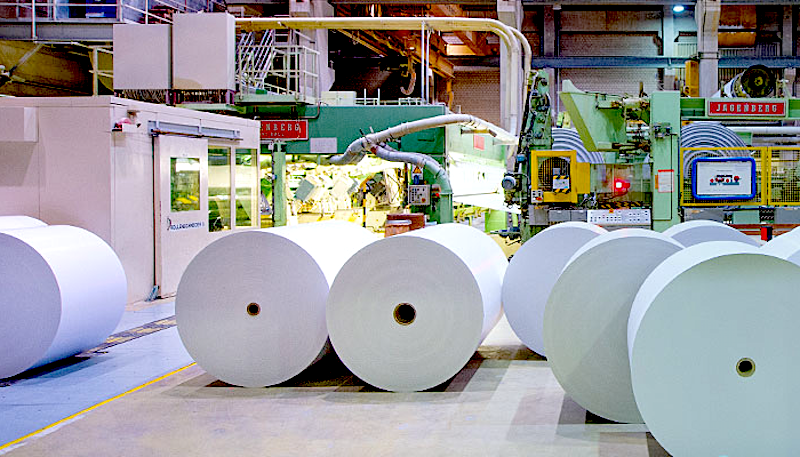In 2021, the direct mail industry saw rapid and consistent change. Key influences of these changes included a shift in the U.S. remote workforce, global supply chain disruptions (particularly the paper market), and national labor shortages, which drove evolution as companies looked for new ways to reach consumers. We expect this period of rapid change to continue through 2022, as the print industry adapts to changing consumer demands and ongoing economic instability.

2021 Brought Challenges
A quick recap shows 2021 brought never seen before events which had a market-wide impact on raw material, paper, and transportation supplies and services.
- The Gulf Freeze in February drove Force Majeure declarations across many industries, raw material shortages extended into Q4, and prices increased 4% to 10% in 2021.
- Paper demand has increased 5% to 10% year-over-year for white paper products. North American pulp prices rose 40% over the previous year, and paper price increases in 2021 ranged from 7.5% to 20%.
- National Load-to-Truck driver ratios reached as high as 12 loads to 1 driver in 2021.
- Crude oil prices were up 128% versus last year, with the national average diesel fuel price on the rise at $3.72/gallon in December, compared to $2.41/gallon in September 2020.
- Container shipping costs have increased nearly 195% over the past year with supplier surcharges being introduced for 2022 to cover rising costs.
- In October 2021, more than 11 million open jobs existed in the U.S., the highest level ever, with over one million more jobs than unemployed people, according to the Labor Department.
- In 2022, we see speed optimization becoming a significant selling point throughout our industry, as companies look for ways to offset postal costs and service downgrades, while driving to increase return on marketing investment (ROMI). In order to meet these challenges, heightened collaboration between Sales, Operations, and Supply Chain becomes pivotal to ensure the timely delivery and accurate management of paper and other key materials for direct mail production.
Diverging Trends in the Paper Market
- The COVID-19 crisis accelerated the diverging trend between paper sub-sectors in an $188B paper industry, thanks to booming e-commerce sales. Global paper output is expected to be 416 million tons in 2022, still 4 million tons short of its 2018 level.
- Paperboard is racing ahead of printing and writing papers―industry experts expect paperboard to account for two-thirds of global paper output by the end of 2022 (up from 50% before COVID-19). A multitude of printing and writing papers, newspapers included, have seen their worldwide output market share declining from 31% in 2015 to an estimated 25% in 2021.
As the market demand for cartons and other paperboard products dramatically increased, white paper product manufacturing declined in recent years, with coated freesheet volumes down 48% from 2017 to 2021, and uncoated freesheet dropping 12% during the same period.
One of the strengths of the pulp and paper industry is the fact that the demand for packaging products is always expanding. Online sales of pulp and paper products are growing in the United States and China―more than 15% of pulp and paper sales in the United States is expected to occur online in 2022, partly due to the explosion of e-commerce.
Paper mills and merchants are projecting allocations and continued limited supplies well into 2022. However, as paper mills work to replenish inventories and demand levels off, most experts anticipate some relief after the second quarter, with pulp and wood prices likely to moderate.
Supply Chains Continue to Evolve
Supply chain market headwinds are expected to continue into 2022, including:
- Inflation driven by ongoing disruptions in paper and raw material availability and uncertainties across ocean, air, and ground transportation. (Global shipping volume is expected to surpass 100 billion parcels in 2022, according to projections by Pitney Bowes.);
- Labor shortages resulting from increases in the remote workforce and employees transitioning to higher paying jobs;
- Demand uncertainty caused by rising global demand with dramatic changes in consumption with consumers shifting focus to the purchase of products and away from services.
Conversely, several tailwinds have emerged which will drive 2022 supply chain activities, including:
- Increased awareness of market conditions and a rise in focus at executive and board levels;
- Changing analytic capabilities driving dramatic improvement in use of analytics to manage supply chain challenges;
- Heightened consciousness of corporate social responsibility creating pressure on supply chain leaders to rethink “cost” and move to “sustainable value” with companies reconsidering supply sources, and a potential shift from a global to a more regional supply model.
Strengthening Relationships to Enhance Collaboration
When will the shortages end? No one really knows, but there are good reasons to suspect that workforce, supply chain, and challenges with the paper market will be with us well into 2022 and maybe longer. Efforts are ongoing to strengthen supplier relationships, both regionally and globally, as well as enhance collaboration between clients, sales, and operations to improve visibility, enabling the IWCO Direct supply chain team to quickly respond to your paper, production material, and service needs.
Source: IWCO
